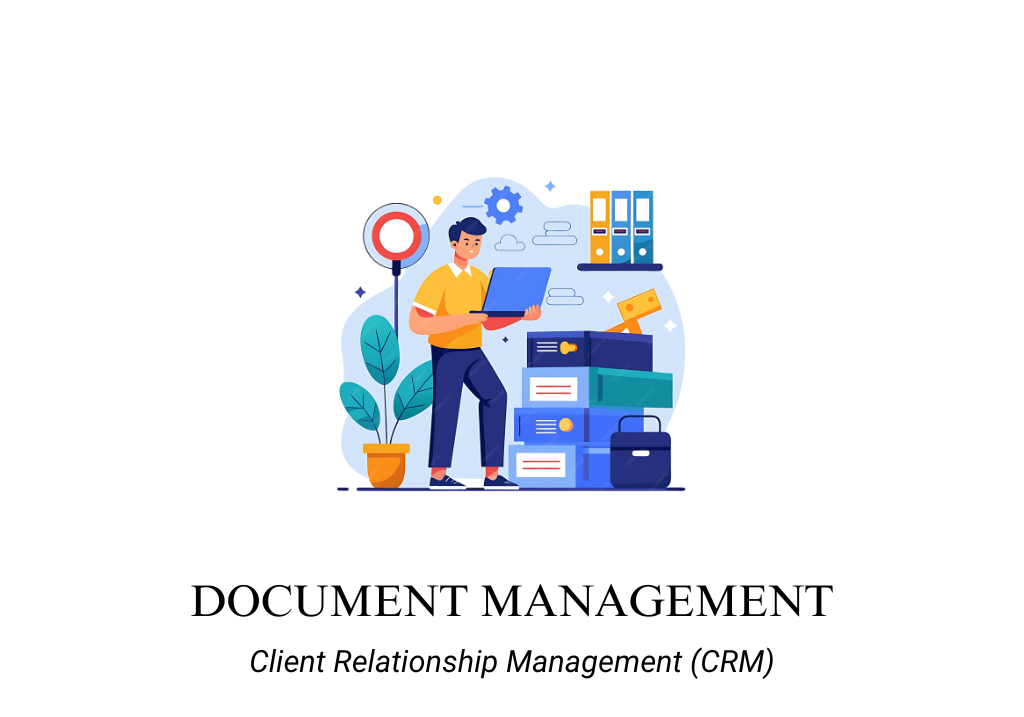Introduction
Document management refers to the organized storage, creation, sharing, and editing of documents in a digital format. In the legal industry, document management systems (DMS) are essential tools that help law firms handle large volumes of legal documents efficiently. Legal professionals regularly deal with contracts, pleadings, agreements, and case-related paperwork that require strict version control, secure sharing, and compliance with industry regulations.
A document management system is not just about storing files; it involves managing the entire lifecycle of legal documents, from creation to final archiving. A robust document management system enables legal teams to collaborate effectively, avoid document-related errors, and ensure the security of sensitive information.
Purpose
The purpose of document management in a legal environment is to centralize and streamline the handling of legal documents, making it easier for attorneys, paralegals, and other legal staff to create, organize, share, and retrieve documents. By implementing a document management system, law firms can ensure that every document is accessible, up-to-date, and stored securely, reducing the risks associated with manual document handling and file mismanagement.
For law firms, managing legal documents efficiently is crucial for maintaining client trust, ensuring compliance with legal standards, and optimizing workflows. An effective document management system reduces the administrative burden, improves collaboration, and protects confidential information from unauthorized access or loss.
Benefits and Use Cases
- Improved Workflow Efficiency: Managing documents manually can be time-consuming and prone to errors. A document management system automates processes such as document creation, sharing, and retrieval, reducing the time spent on administrative tasks. According to the International Legal Technology Association (ILTA), firms using document management systems report a 50% reduction in time spent searching for documents.
- Enhanced Collaboration: Legal cases often require multiple team members to collaborate on documents simultaneously. A document management system allows for real-time collaboration, ensuring that all changes are captured and integrated into the final document without the confusion caused by emailing drafts back and forth. Tools like Microsoft Word’s integration with document management systems allow multiple users to work on the same document at once.
- Regulatory Compliance and Security: Law firms must comply with industry regulations such as GDPR, HIPAA, or specific legal standards related to document retention and handling. Document management systems provide built-in compliance features, including secure access controls, audit trails, and data encryption, ensuring that firms remain compliant with legal requirements.
- Minimized Risk of Data Loss: Paper documents are at risk of being lost, damaged, or destroyed, whereas digital documents stored in a document management system are backed up and protected from physical damage. Additionally, DMS provides version control features, ensuring that important document versions are never accidentally overwritten or deleted.
- Searchable Archives: With hundreds or even thousands of case files, locating a specific document manually can be incredibly challenging. Document management systems use advanced search features, such as keyword searches, metadata tagging, and filtering, enabling users to quickly find the exact document they need.
Features of Document Management
Document Creation
Definition: Document creation refers to the process of generating legal documents within the document management system. This feature integrates with word processing tools (such as Microsoft Word) to allow legal professionals to create and format contracts, pleadings, agreements, and other legal documents directly from the system.
Purpose: The purpose of document creation in a DMS is to streamline the drafting process by providing pre-built templates, automated formatting tools, and seamless integration with other software platforms. This reduces manual errors, increases efficiency, and ensures consistency across all legal documents.
Use Case: A legal professional working on a corporate merger case needs to create a new contract. Using the document creation feature, they can access a pre-approved contract template, customize the necessary fields, and format the document according to the firm’s standards. The system allows them to track changes and collaborate with other team members in real time.
Benefits:
- Reduces time spent drafting documents from scratch.
- Ensures consistency across legal documents.
- Integrates with external tools like Microsoft Word and Google Docs.
- Enables real-time collaboration and editing.
Document Templatization
Definition: Document templating involves the creation of standardized document templates that legal teams can use to quickly generate common legal documents, such as contracts, wills, or legal forms. These templates are pre-formatted and can include placeholders for case-specific information.
Purpose: The purpose of document templating is to ensure that legal professionals don’t have to start from scratch each time they need to create a document. It ensures consistency, reduces errors, and saves time. Templates are especially useful for firms that handle repetitive legal tasks like drafting agreements or sending client notifications.
Use Case: A law firm specializing in estate planning frequently drafts wills and trust documents. By using document templating, the firm can create standardized templates that include all necessary legal language, requiring attorneys to only fill in the specific details for each client. This allows them to generate legally compliant documents quickly while maintaining a high level of accuracy.
Benefits:
- Saves time by allowing the reuse of pre-formatted documents.
- Ensures that all legal documents follow the same structure and formatting.
- Reduces the likelihood of human error.
- Increases document creation efficiency for high-volume, repetitive tasks.
Version Control
Definition: Version control refers to the ability to track changes made to a document over time, ensuring that all edits, revisions, and previous versions are stored and accessible. This feature is crucial in legal environments where multiple drafts of documents are created, and the ability to revert to a previous version is often necessary.
Purpose: The purpose of version control is to maintain a clear history of document edits, ensuring transparency in the editing process and preventing accidental loss of important information. Legal teams can review changes, compare document versions, and restore older versions if necessary.
Use Case: A legal team working on a settlement agreement undergoes multiple rounds of revisions with opposing counsel. Version control ensures that all changes are documented, and if there is a dispute over a particular term, the attorney can easily refer back to earlier drafts to confirm what was originally agreed upon. Each version is time-stamped and attributed to the person who made the edits.
Benefits:
- Provides a clear audit trail of document revisions.
- Prevents the accidental loss of important changes.
- Enables users to revert to previous versions if necessary.
- Ensures that the final version of a document is accurate and reflective of all necessary revisions.
Granular Permissions
Definition: Granular permissions refer to the ability to set specific access controls on documents, determining who can view, edit, or share a particular file. These permissions can be customized on a per-document or per-user basis, ensuring that sensitive information is only accessible to authorized individuals.
Purpose: The purpose of granular permissions is to protect sensitive legal documents from unauthorized access or tampering. Law firms often handle confidential information, and restricting access ensures that only approved team members can view or edit sensitive files. Granular permissions also help ensure compliance with regulations such as GDPR or HIPAA.
Use Case: In a high-profile litigation case, only senior partners and the legal team directly involved in the case are granted access to key documents. Paralegals and support staff may have access to certain non-sensitive documents but are restricted from viewing confidential case files. Granular permissions ensure that the right people have the right level of access.
Benefits:
- Enhances data security by restricting access to sensitive information.
- Ensures compliance with regulatory requirements.
- Prevents unauthorized edits or sharing of documents.
- Allows law firms to control document access at a granular level, minimizing security risks.
Conclusion
In the legal industry, where accurate document handling and compliance are critical, a document management system is indispensable. The features of document creation, templating, version control, and granular permissions ensure that law firms can handle documents efficiently, securely, and collaboratively. By adopting a robust document management system, legal professionals can minimize the administrative burden, enhance security, and improve productivity, all while maintaining full control over their documents. The result is better client service, improved case outcomes, and stronger compliance with industry standards.
Guide to find best Client Relationship Management (CRM) for lawyers
CHECK OUT CRM TOOLS ON DIRECTORY OR CLICK HERE


